If the first known portraits date back to the Old Kingdom of Egypt, then from Roman Egypt (with painted funerary “Fayum” portraits inserted into the bands of cloth around a mummy’s face), then the history of portraiture starts with the depiction of an individual destined to the dead and to deities. Out of reach of their contemporaries. Since then, portraits have covered all kinds of vocations: commemorative, glorifying, religious, political, individual, collective, realistic, romantic, naturalistic, bourgeois, social… There’s no point trying to be exhaustive.
This exhibition offers an open sequence of portraits produced between 1925 and 2023 - drawings, paintings, photographs and collages.
Alongside, the masterly project of ‘The Doll’, an artificial being with numerous anatomical possibilities and a Surrealist field of exploration par excellence, Hans Bellmer turned his hand to commissioned portraits so as to survive at a time when he was hard up. Like this Portrait de femme from 1948. A bourgeois portrait.
Concerning his realistic portraits, painted out of necessity, Bellmer said: “A narcissistic aspect is played out in almost all individuals, everyone wants to obtain a portrait of their ideal ego, a non-snapshot which a mirror or photographic film refuses to give. This difference is natural and understandable: a child is intact by definition; it does not fix an image of its ego onto a premeditated exterior image, as a grownup would.”
Jonny Negron, in a highly composed mirror composition (oil on linen), provides a self-portrait in the private sphere. A realistic and intimate portrait of the artist’s bathroom, whose medicine cabinet unveils a psychological portrait. Edges of illusion, 2023.
Florence Henri has photographed Pierre Minet in a mirror that becomes a framed photograph. This print is a pendant to the self-portrait of the artist. An encrypted, constructivist portrait.
Anonymes, 2020. In a puppet theatre staged by Collins, the two characters outrageously doing their business bear characteristics of the artist himself, in a caricature borrowing from a carnivalesque vocabulary. A satirical, grotesque portrait. An artist made a fool of by himself.
Through a play of singular formats (gouache on card), Louise Sartor associates two familiar characters who are holding their phones - the gallerists. A realistic, complicit portrait. Dealers, 2023.
In girl with glasses, 2022, Yu Nishimura propels a natural face into an outlandish scale. A hazy portrait, characteristic of the artist, set off by a subtle shift in the touches. Which places all the elements in the painting on the same level of importance.
This haziness is heightened in this back portrait of a woman, making an everyday gesture, which contrasts with the mysterious, moving atmosphere procured by Niklas Taleb. Modern life is still rubbish, modern rubbish is still life (2), 2018.
A double portrait set in a series of transparencies, “associations between the visible and the invisible”, as Léonce Rosenberg has suggested, whose subjects’ departure points are often figures from classical art, Picabia’s drawing is above all a dialogue with painting itself. In the manner of a tautological portrait.
Kyoko Idetsu has written: I asked my son who was the nicest person he knew. He answered ‘my grandmother’. A familial portrait of a constellation of heroic-tragic characters.
A young man is not looking at the photographer who is taking his portrait. This is Jacques-André Boiffard, at the time Man Ray’s assistant, through the lens of his friend, Bérénice Abbott, who was starting out in photography. A tender, disturbing portrait of an upcoming artist.
In a mutating portrait, Shana Moulton associates several cut-up faces which come over as just as many possibilities for humour (Moods, 2015), as in the various facets of the personality of Cynthia, the artist’s alter-ego, and the sole actress in the entirety of her video work.
The last painting is by Kyoko Idetsu: The doctor said “he needs more calcium.“ Radiographic portrait.
A fragmented but possible definition proposal for portraiture. For contemporaries.
Thanks to the artists and Galerie 1900-2000, Chateau Shatto, Édouard Montassut and Nonaka-Hill.
Berenice Abbott, Hans Bellmer, Mathis Collins, Florence Henri, Kyoko Idetsu, Shana Moulton, Jonny Negron, Yu Nishimura, Francis Picabia, Louise Sartor, Niklas Taleb
Portraits9 rue des Cascades, Paris
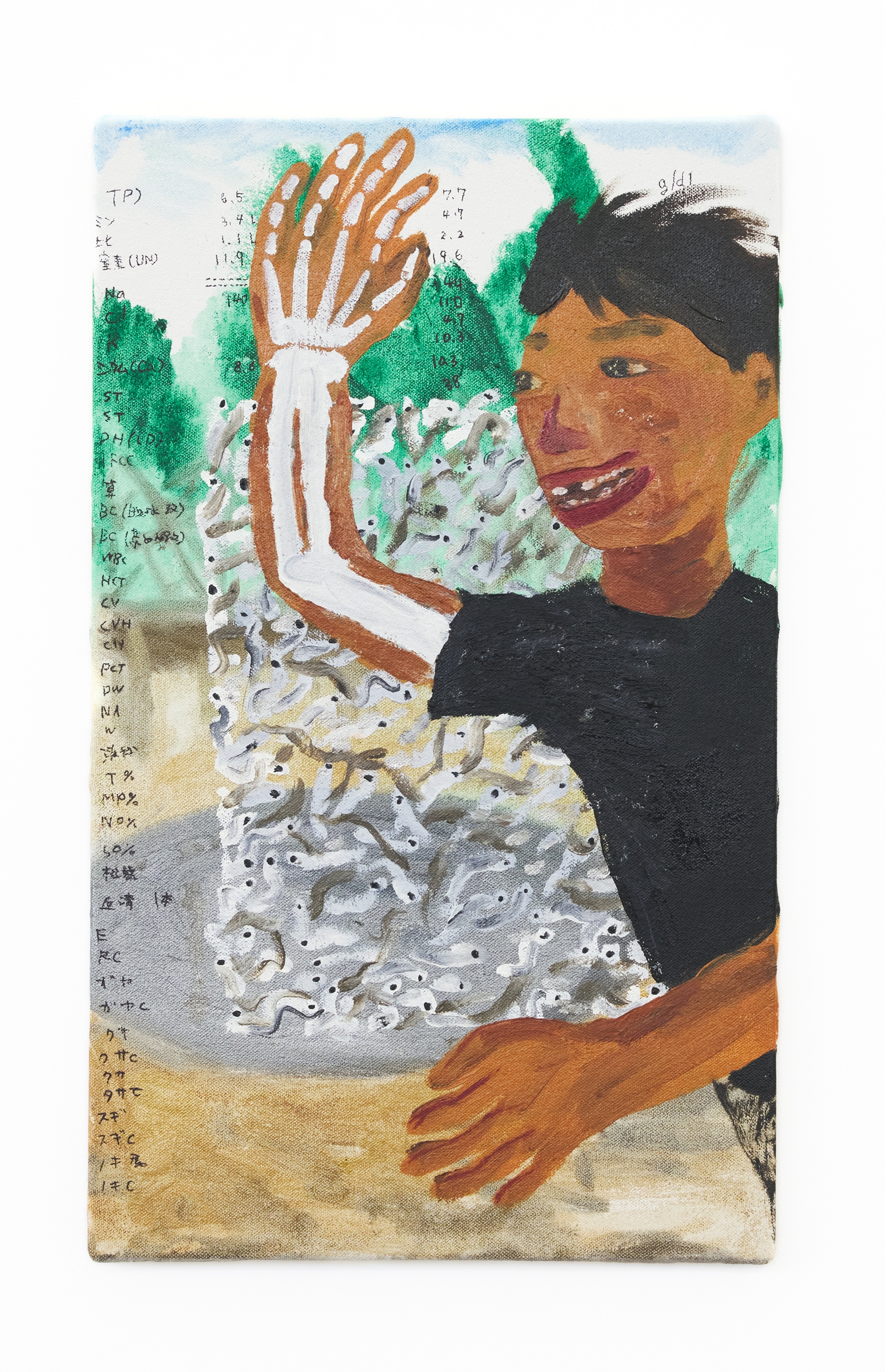
Kyoko Idetsu, Calcium (Ca), 2023, oil on canvas, 45.5 × 27.3 cm
Si les premiers portraits connus sont ceux de l’Ancien Empire égyptien, puis de l’Egypte romaine (avec les portraits « du Fayoum », portraits funéraires peints insérés dans les bandelettes au niveau du visage de la momie), alors l’histoire du portrait commence par une représentation de l’individu destiné aux morts et aux divinités. Hors de portée de leurs contemporains. Depuis, le portrait a embrassé toutes les vocations: commémorative, glorificatrice, religieuse, politique, individuelle, collective, réaliste, romantique, naturaliste, bourgeoise, sociale… Impossible d’être exhaustif, inutile.
L’exposition suggère une séquence libre de portraits réalisés entre 1925 et 2023 - dessins, peintures, photographies, collage.
Hans Bellmer, à côté de son entreprise magistrale que constitue la Poupée, créature artificielle aux multiples possibilités anatomiques, champ d’exploration surréaliste par excellence, a prêté sa main à des portraits commandés pour survivre à une époque où il était dépourvu d’argent. Comme ce Portrait de femme de 1948. Portrait bourgeois.
De ses portraits réalisés par nécessité, Bellmer disait : « Le côté Narcisse joue presque toujours chez les individus, chacun désire retrouver dans un portrait le moi idéal, non instantané que lui refuse le miroir ou la pellicule photographique. Cette différence est naturelle et s’explique : l’enfant est intact par définition ; il ne fixe pas l’image de son moi à une image extérieure préméditée comme la grande personne. »
Chez Jonny Negron, dans une composition au miroir très composée (huile sur lin), c’est un autoportrait dans la sphère privée. Portrait réaliste et intime de la toilette de l’artiste, dont le contenu de la pharmacie dévoile un portrait psychologique. Edges of illusion, 2023.
Florence Henri photographie Pierre Minet dans un miroir devenant une photographie encadrée. Ce tirage est le pendant d’un autoportrait de l’artiste. Portrait crypté et constructiviste.
Anonymes, 2020. Dans le théâtre de marionnettes mis en scène par Collins, les deux personnages faisant outrancièrement leurs besoins portent les traits de l’artiste lui-même, dans une caricature empruntant au vocabulaire carnavalesque. Portrait satirique, grotesque. L’artiste tourné en ridicule par lui-même.
Louise Sartor associe par un jeu de formats singuliers (gouache sur carton) deux personnes familières qui manipulent leur téléphone - les galeristes. Portrait réaliste et complice. Dealers, 2023.
Yu Nishimura, girl with glasses, 2022, propulse dans une échelle excessive un visage naturel. Portrait flou, caractéristique de l’artiste, provoqué par un décalage subtil de touches. Qui met tous les éléments du tableau au même niveau d’importance.
Ce flou s’accentue dans le portrait d’une femme de dos, dans un geste ordinaire, qui contraste avec l’atmosphère mystérieuse et émouvante que Niklas Taleb procure. Modern life is still rubbish, modern rubbish is still life (2), 2018
Double portrait s’inscrivant dans sa série des transparences, « associations entre le visible et l’invisible » comme le suggérait Léonce Rosenberg, pour lesquelles les sujets ont souvent comme point de départ des figures de la peinture classique, le dessin de Picabia est avant tout un dialogue avec la peinture elle-même. A la façon d’un portrait tautologique.
Kyoko Idetsu écrit : j’ai demandé à mon fils qui était la plus gentille personne qu’il connaissait. Il a répondu “ma grand-mère.” Portrait familial d’une constellation de personnages héroï-tragiques.
Un jeune homme ne regarde pas la photographe en train de faire son portrait. C’est Jacques-André Boiffard, alors l’assistant de Man Ray, sous l’objectif de Bérénice Abbott, son amie, qui fait ses débuts en photographie. Portrait tendre et troublant d’un artiste en devenir.
Dans un portrait en mutation, Shana Moulton associe plusieurs visages découpés qui apparaissent comme autant de possibilités d’humeur (Moods, 2015), comme les différentes facettes de la personnalité de Cynthia, l’alter-ego de l’artiste, unique actrice de l’ensemble de son oeuvre vidéo.
Le dernier tableau de la ligne est de Kyoko Idetsu: Le docteur a dit: “il a besoin de plus de calcium”. Portrait radiographique.
Une proposition de définition fragmentaire mais possible du portrait. Pour les contemporains.
Merci aux artistes et à Galerie 1900-2000, Chateau Shatto, Édouard Montassut et Nonaka-Hill.
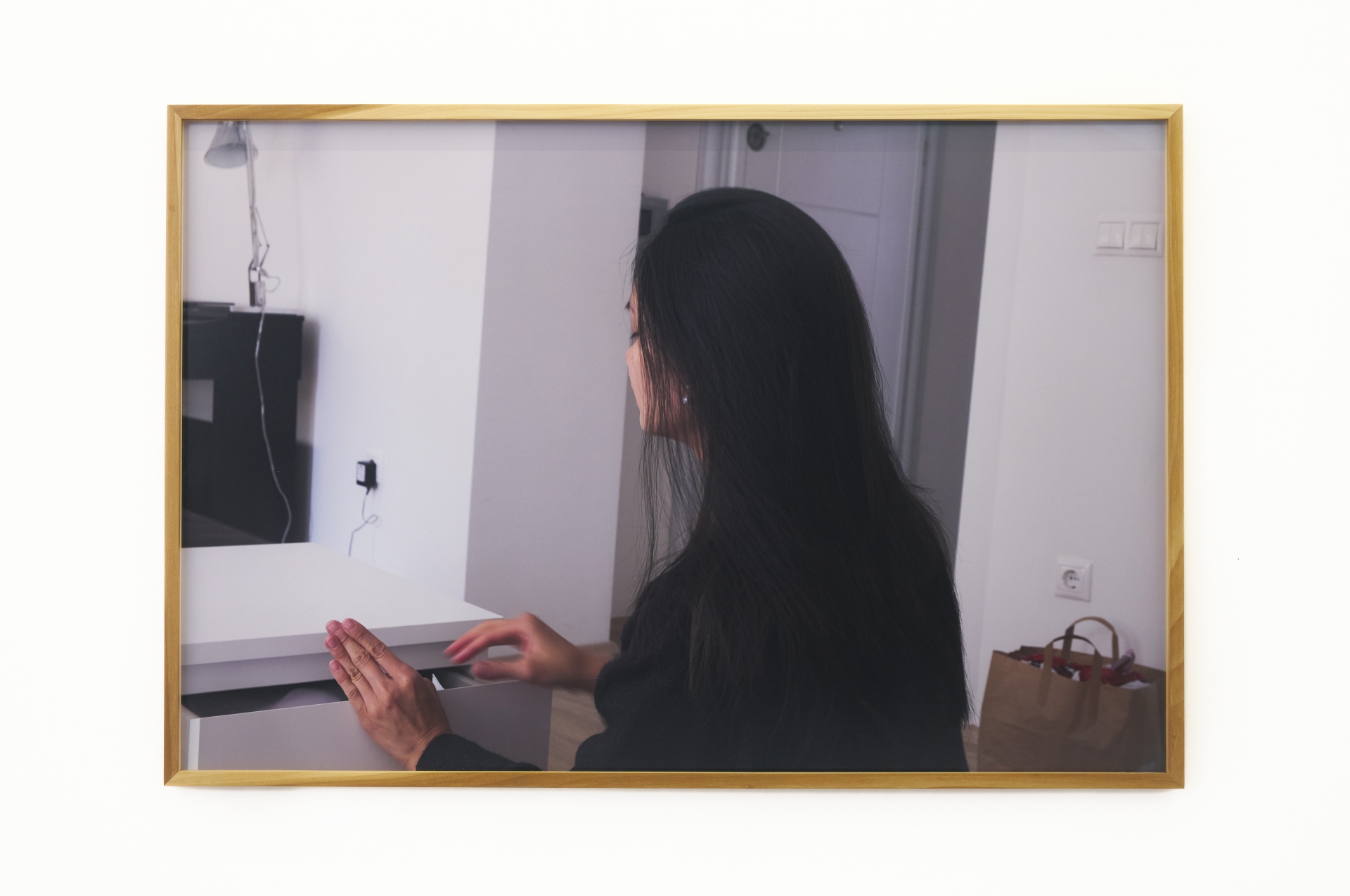
Niklas Taleb, Modern life is still rubbish, modern rubbish is still life (2), 2018
Digital c-print, artist frame, 71 × 105 cm — Ed. 1/3 + 1 AP

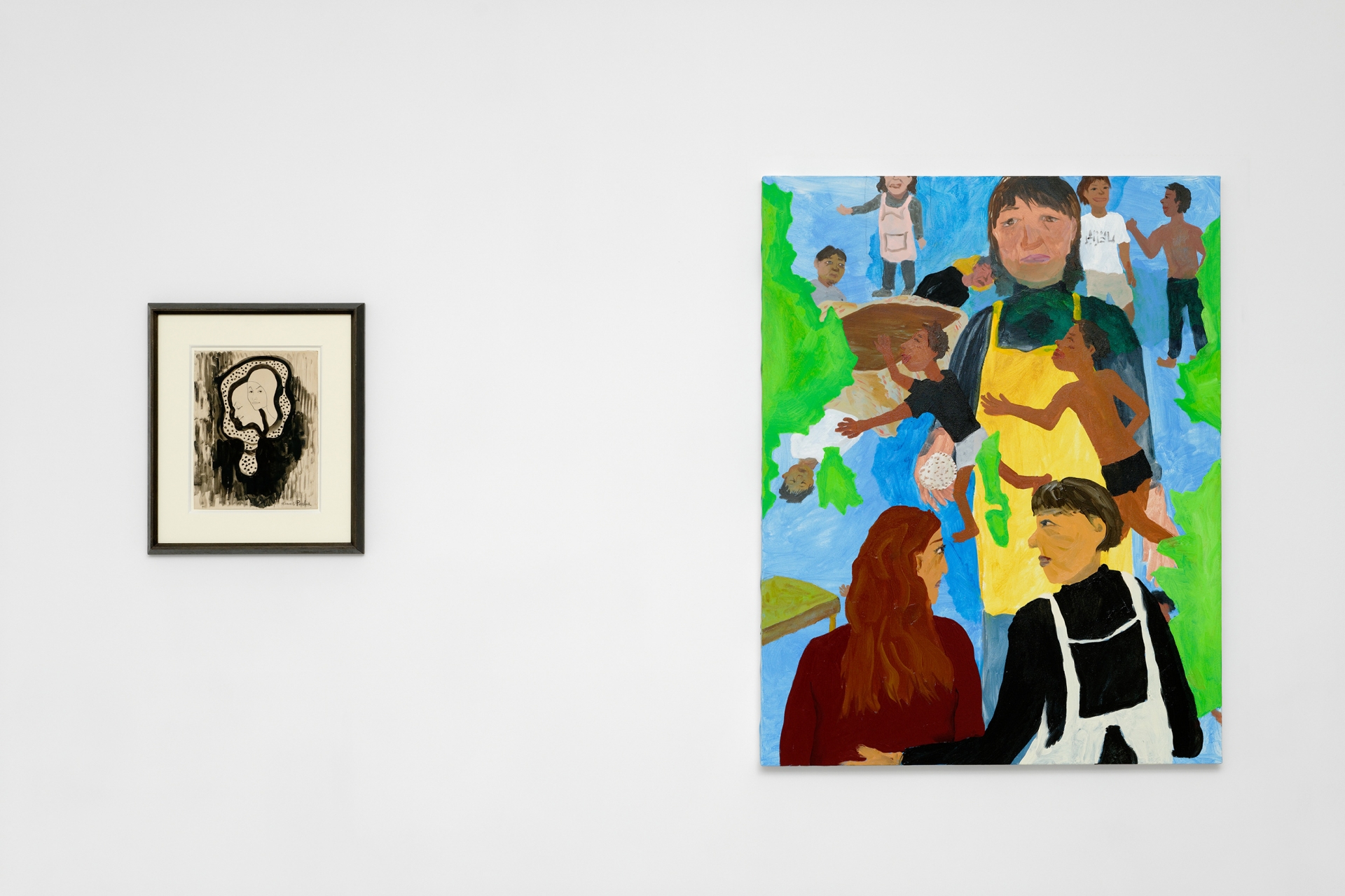
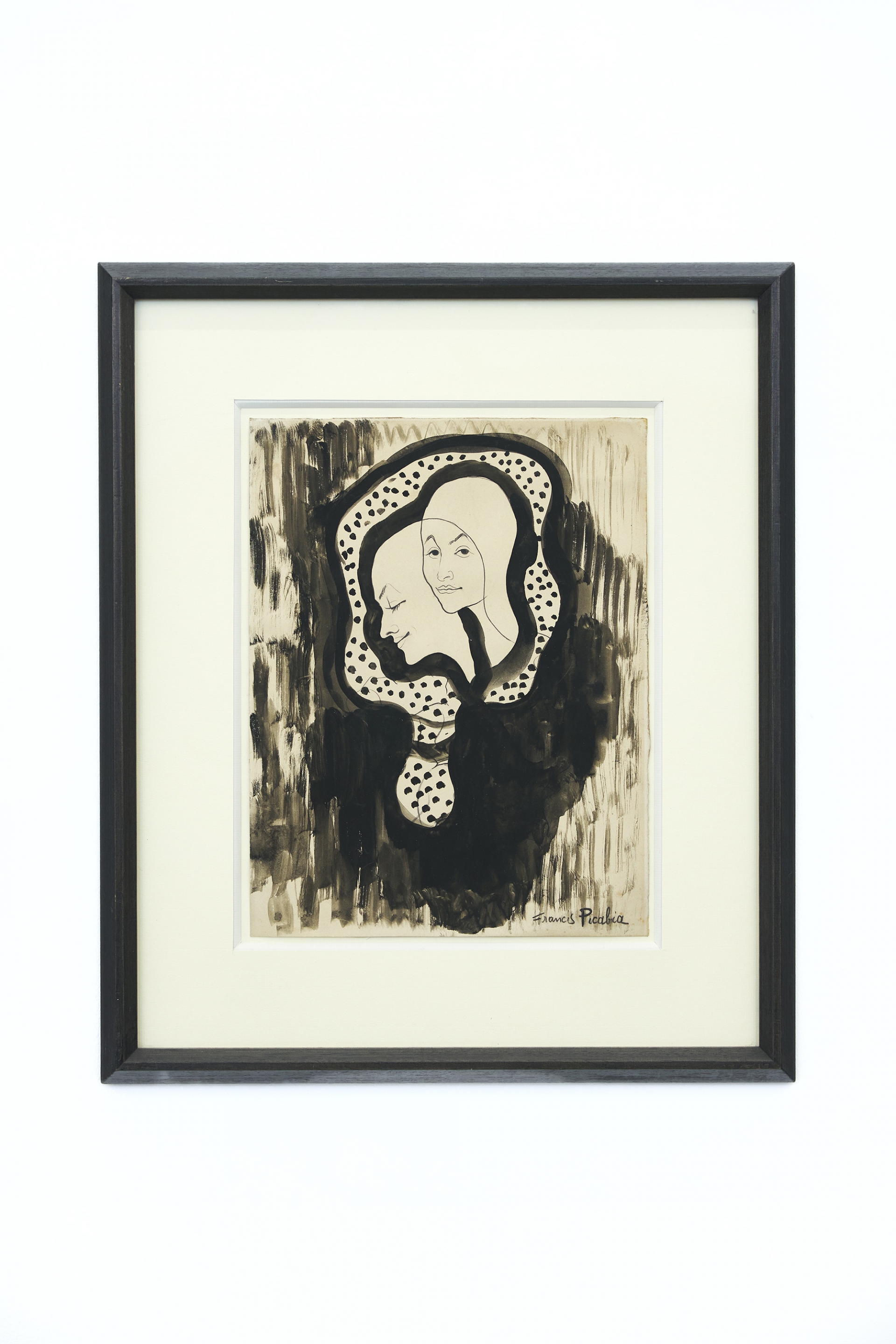
Francis Picabia, Sans titre, circa 1929
Ink and pencil on paper, 31,3 × 24,2 cm | 50 × 42,4 cm (framed)

Kyoko Idetsu, Kind person, 2023
Oil on canvas, 116,7 × 91 cm
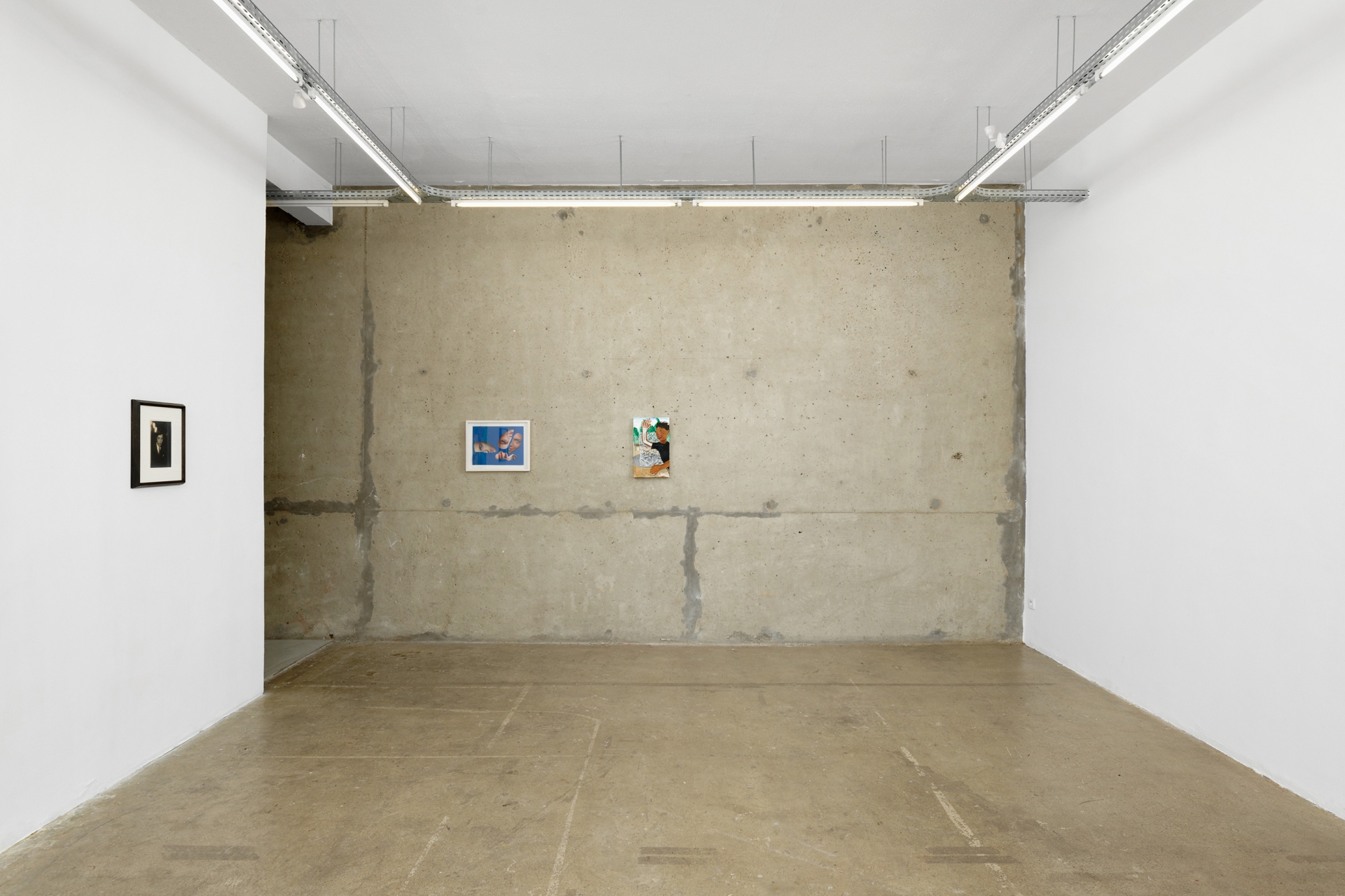
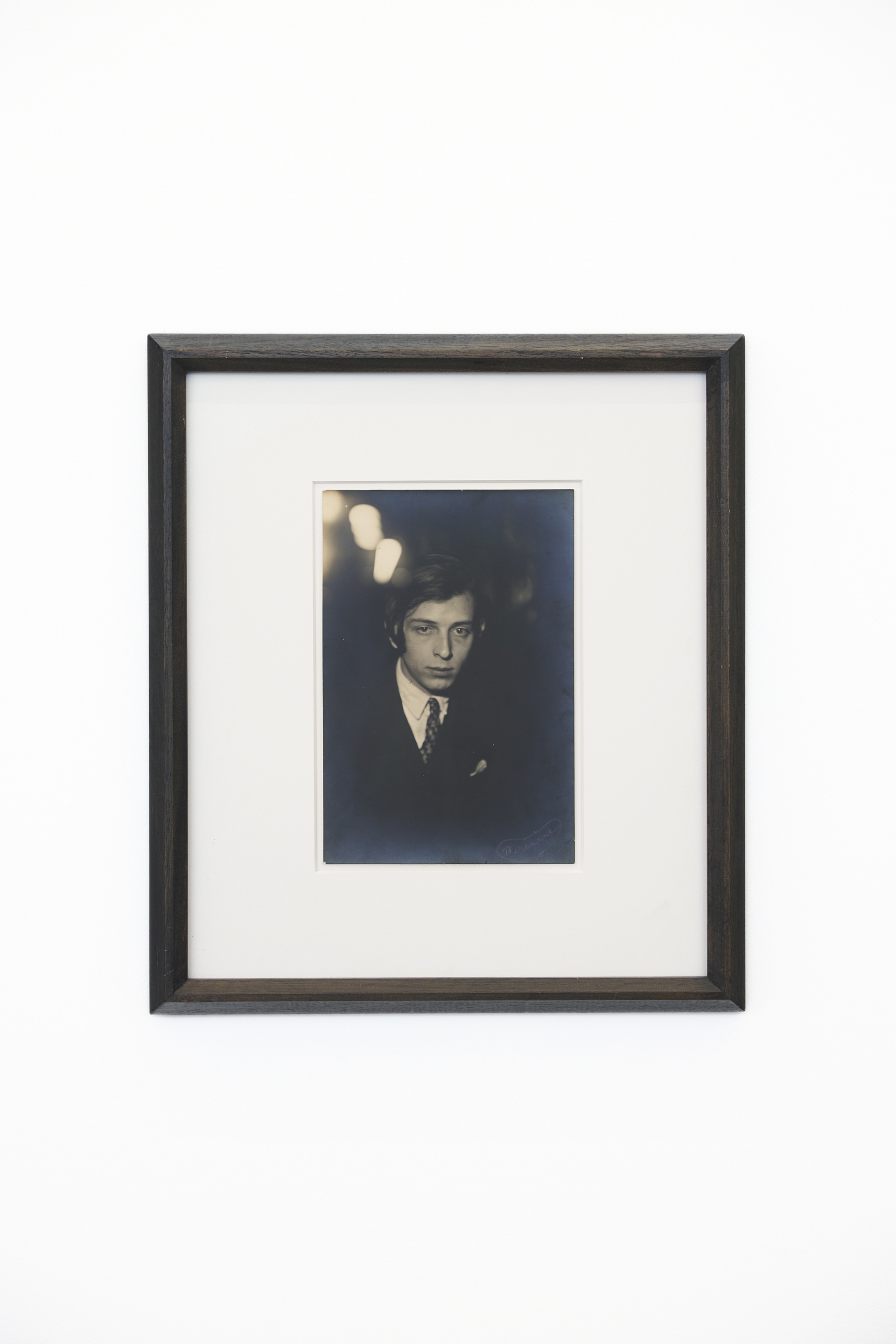
Berenice Abbott, Portrait de Jacques-André Boiffard, circa 1925
Vintage silver print, 22 × 15 cm | 35,5 × 40,5 cm (framed)
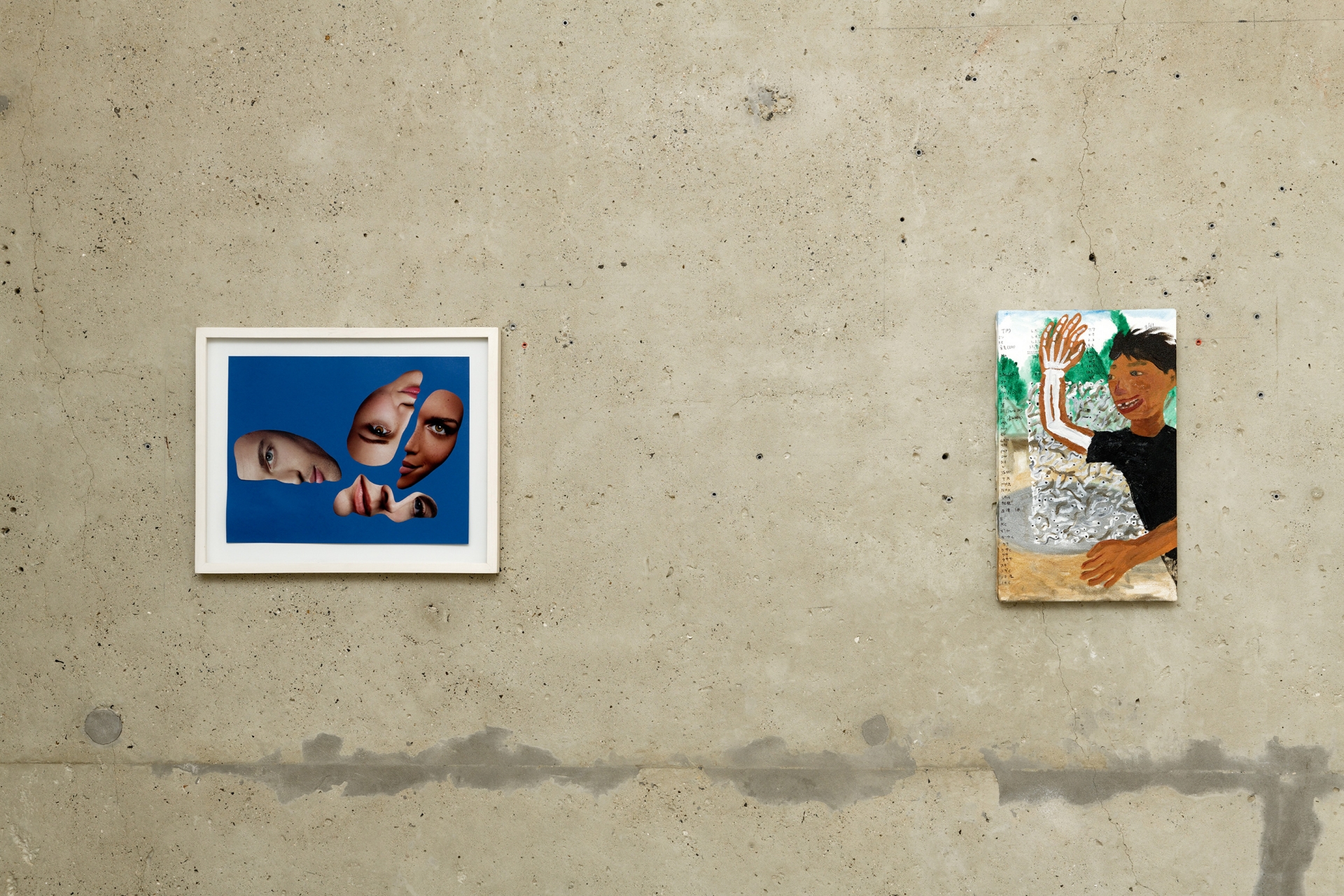

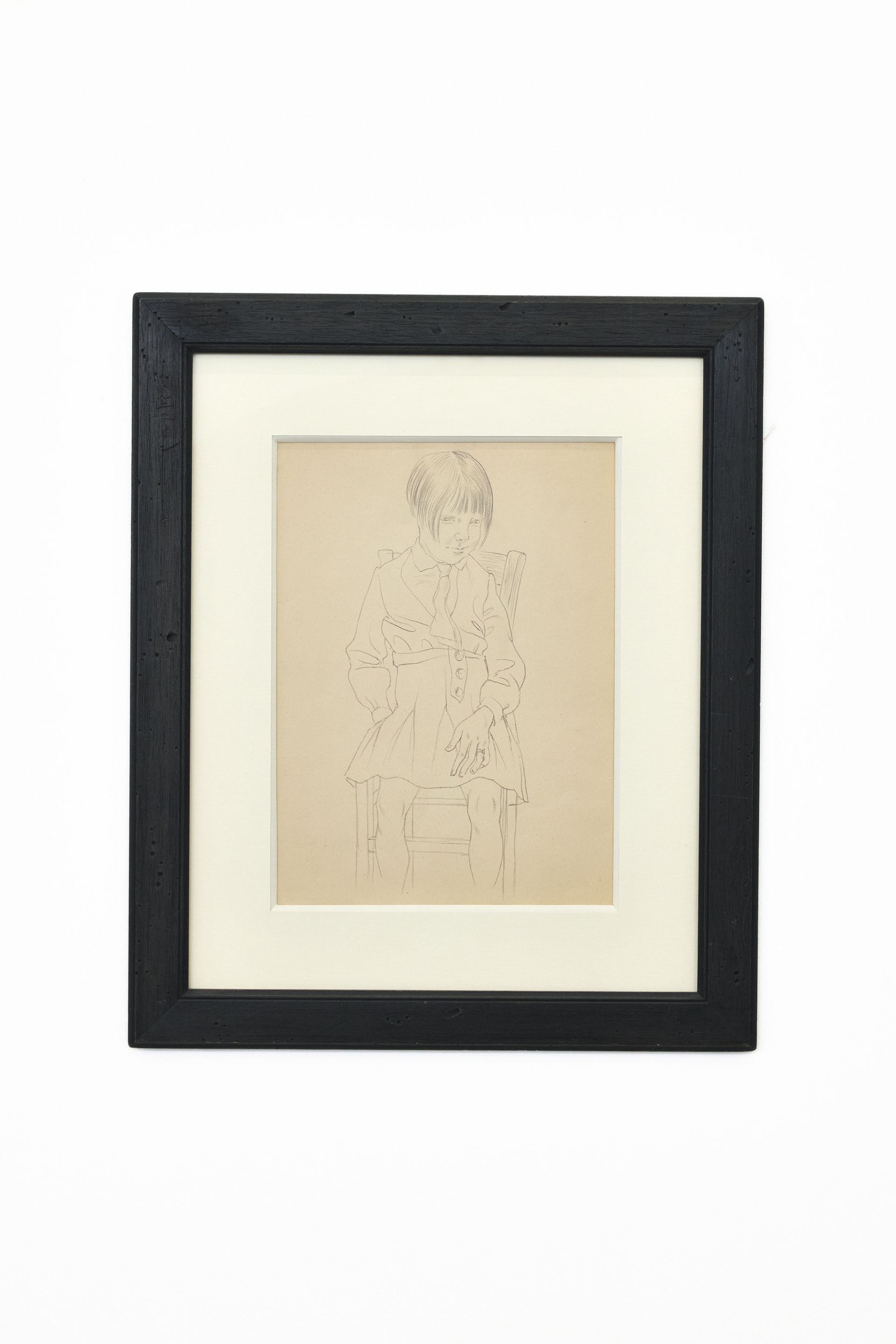
Hans Bellmer, Sans titre, circa 1925
Pencil on paper, 35 × 24,5 cm | 50,5 × 42 cm (framed)

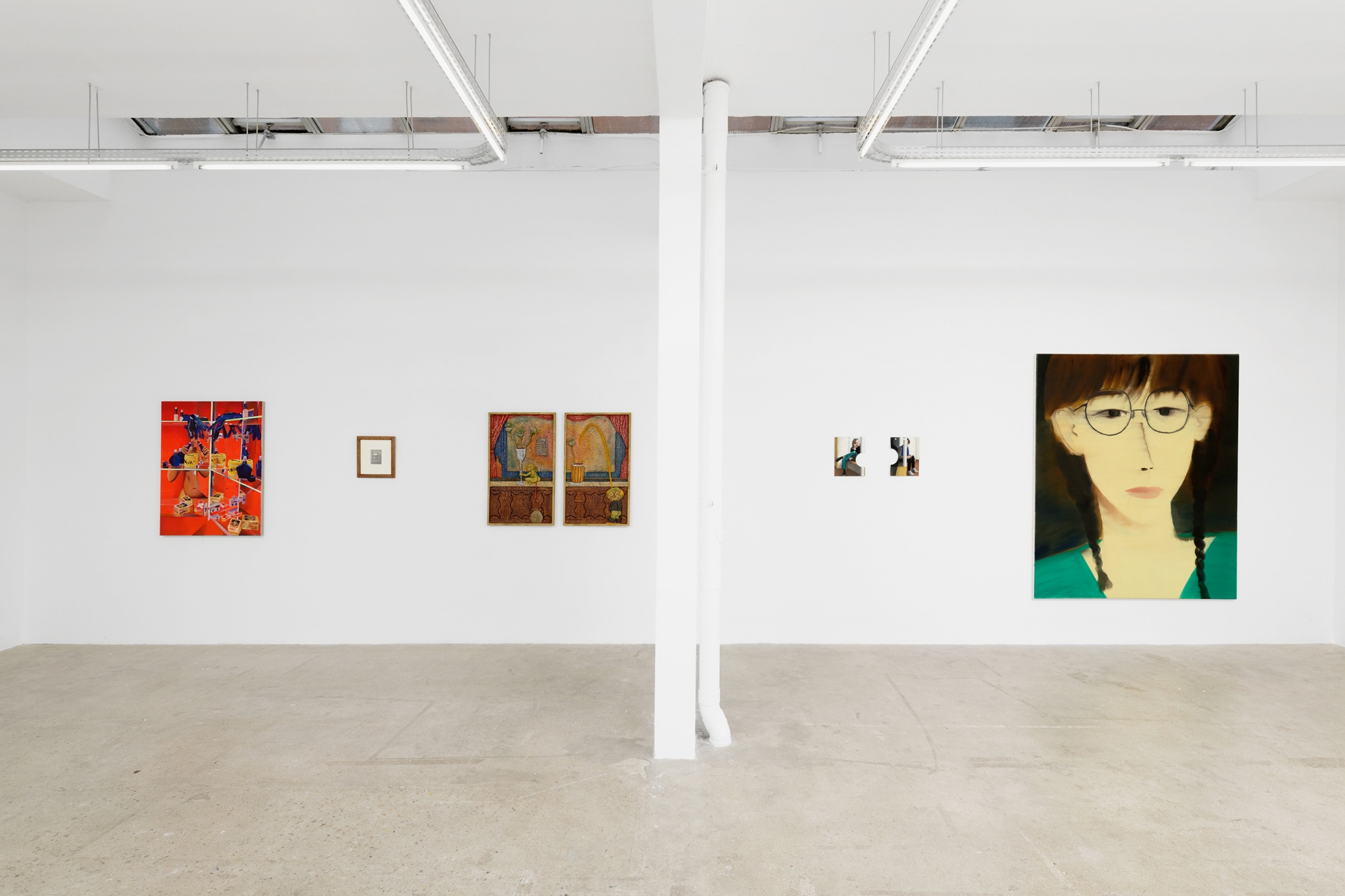
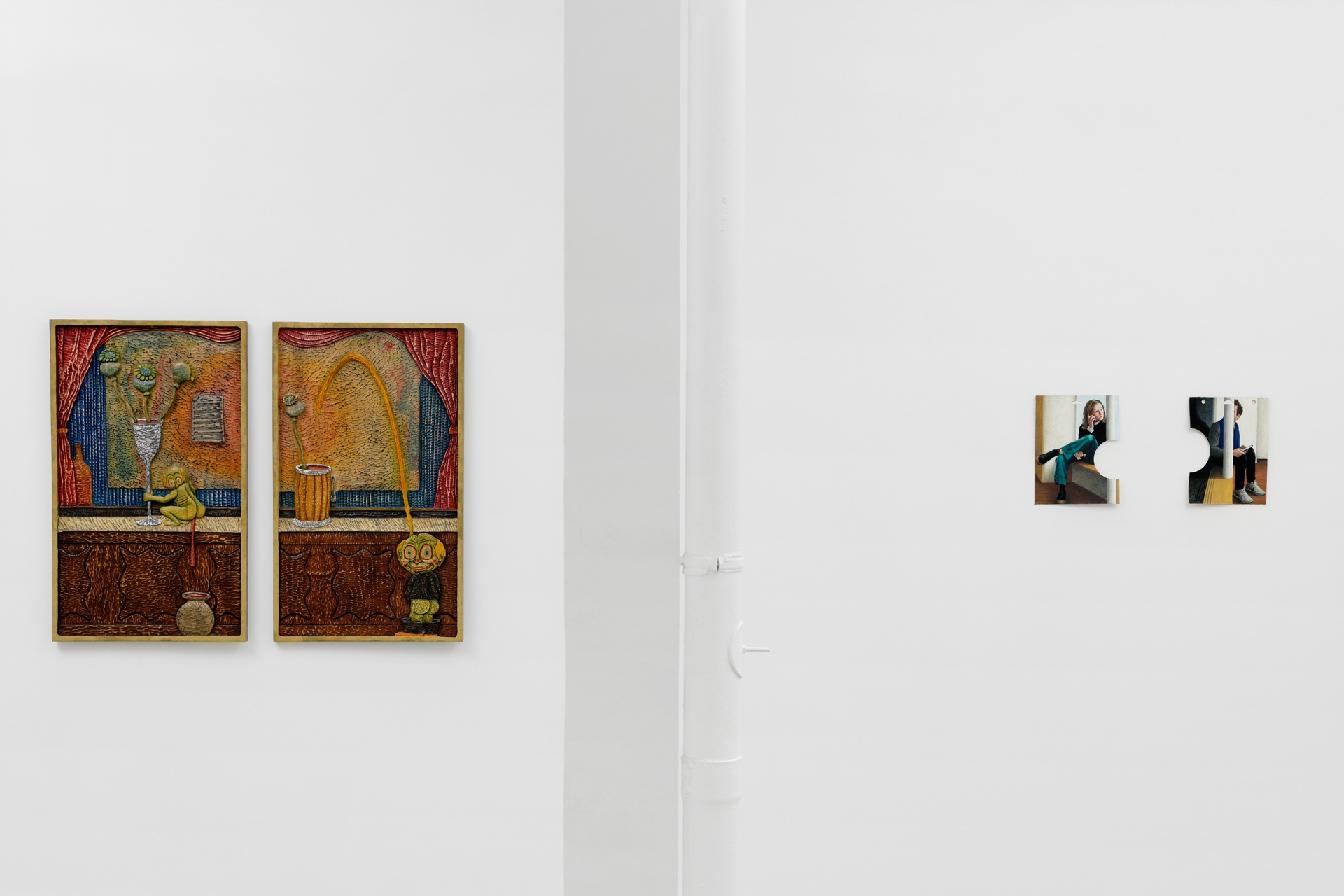

Mathis Collins, Anonymes, 2020
Linden wood, wood tint, acrylic varnish, copper pigments, brass pigments, 90 × 110 cm
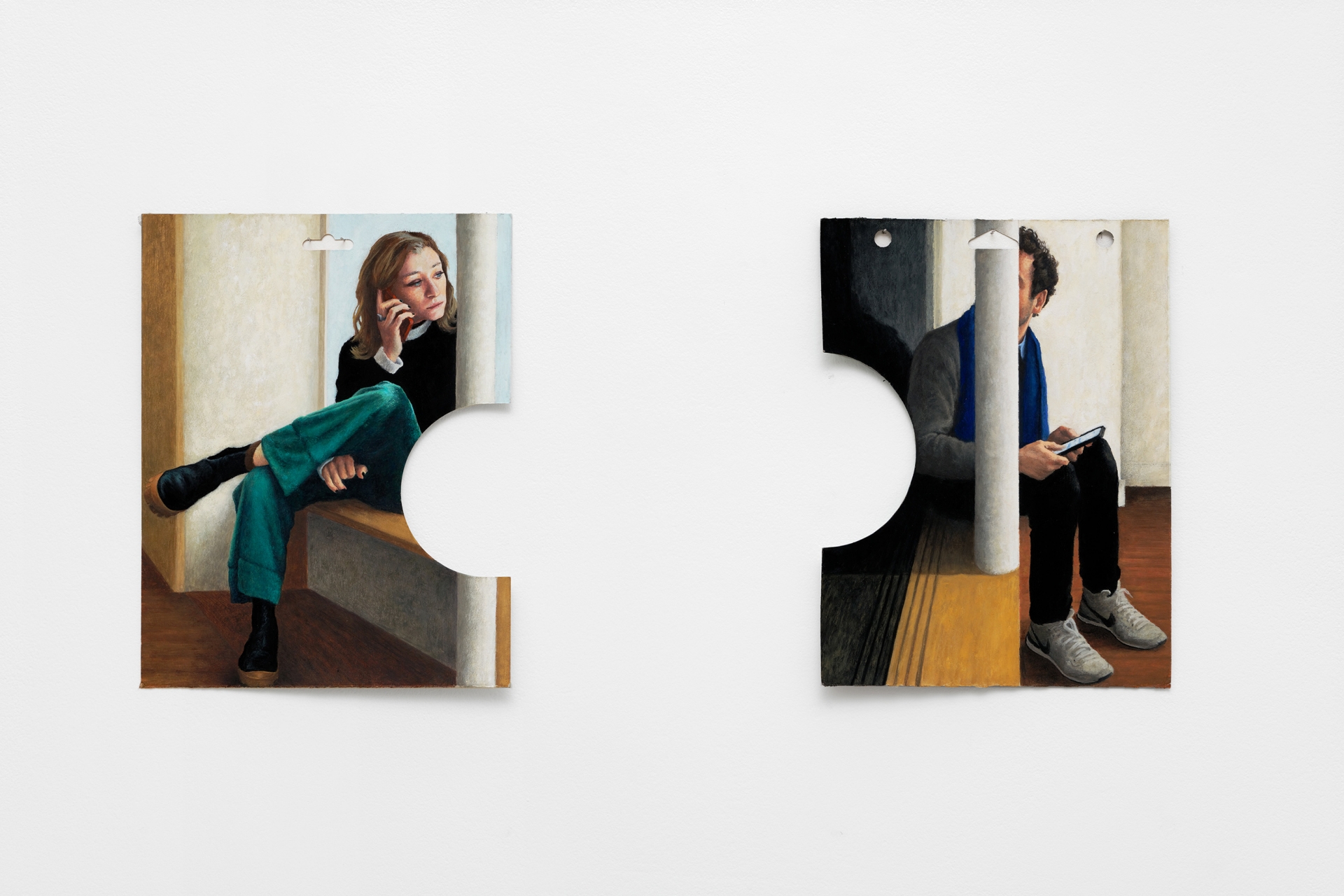
Louise Sartor, Dealers, 2023
Gouache on cardboard, diptych, 31 × 68,5 cm

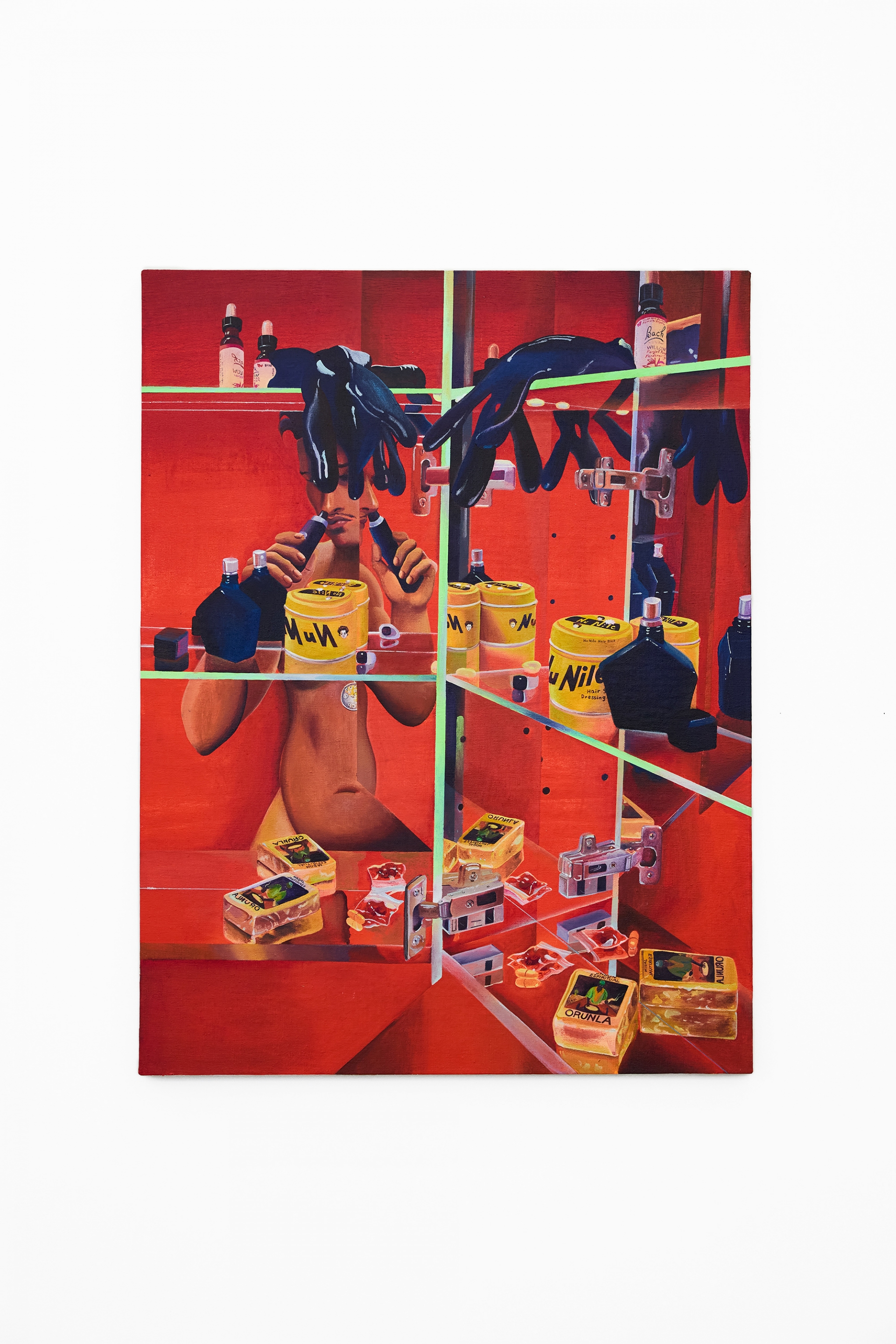
Jonny Negron, Edges of Illusion, 2023
Acrylic on linen, 106,5 × 81 × 4 cm
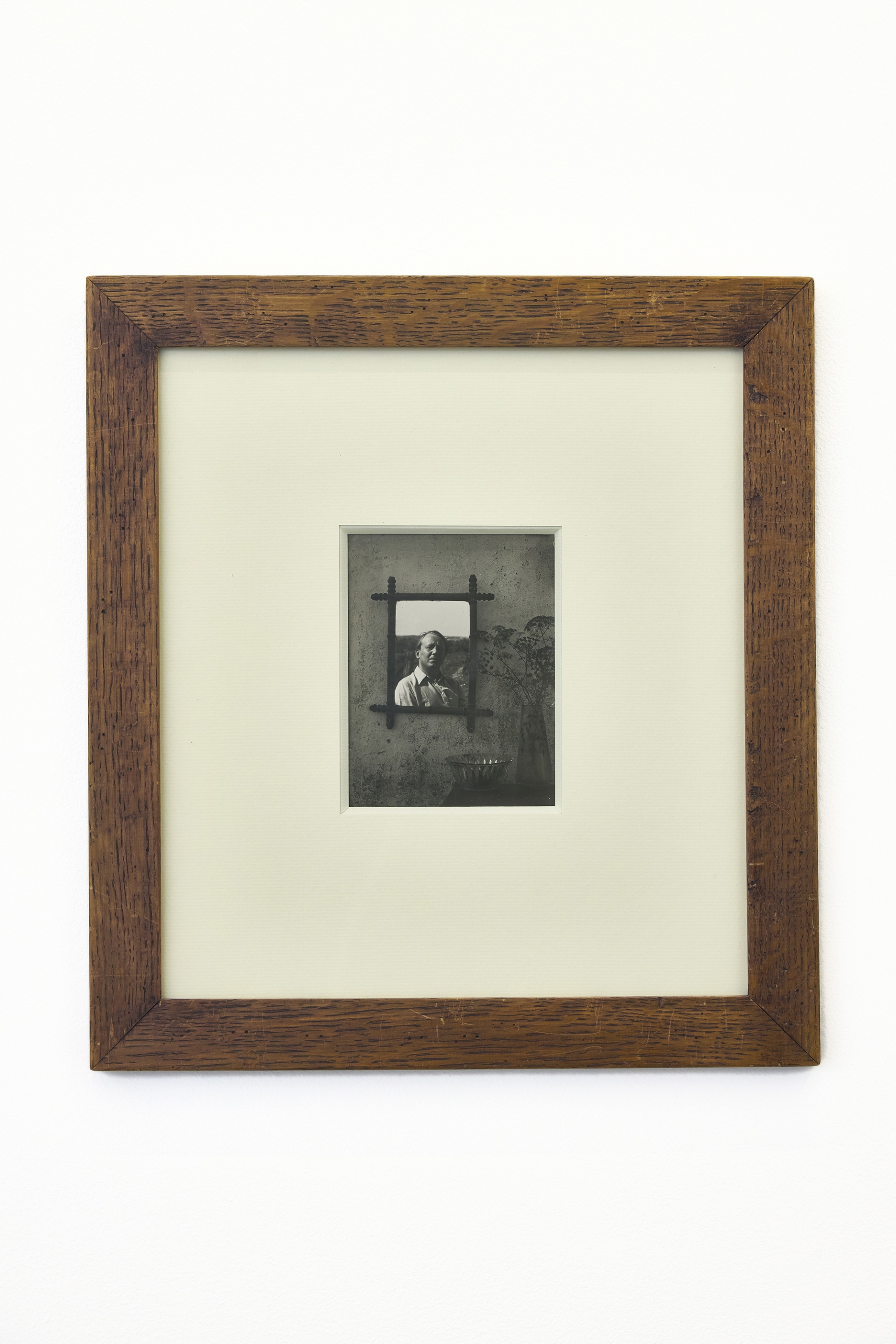
Florence Henri, Composition, Portrait de Pierre Minet, 1938
Vintage silver contact print, 12,2 × 9,2 cm | 30,6 × 33,3 cm (framed)

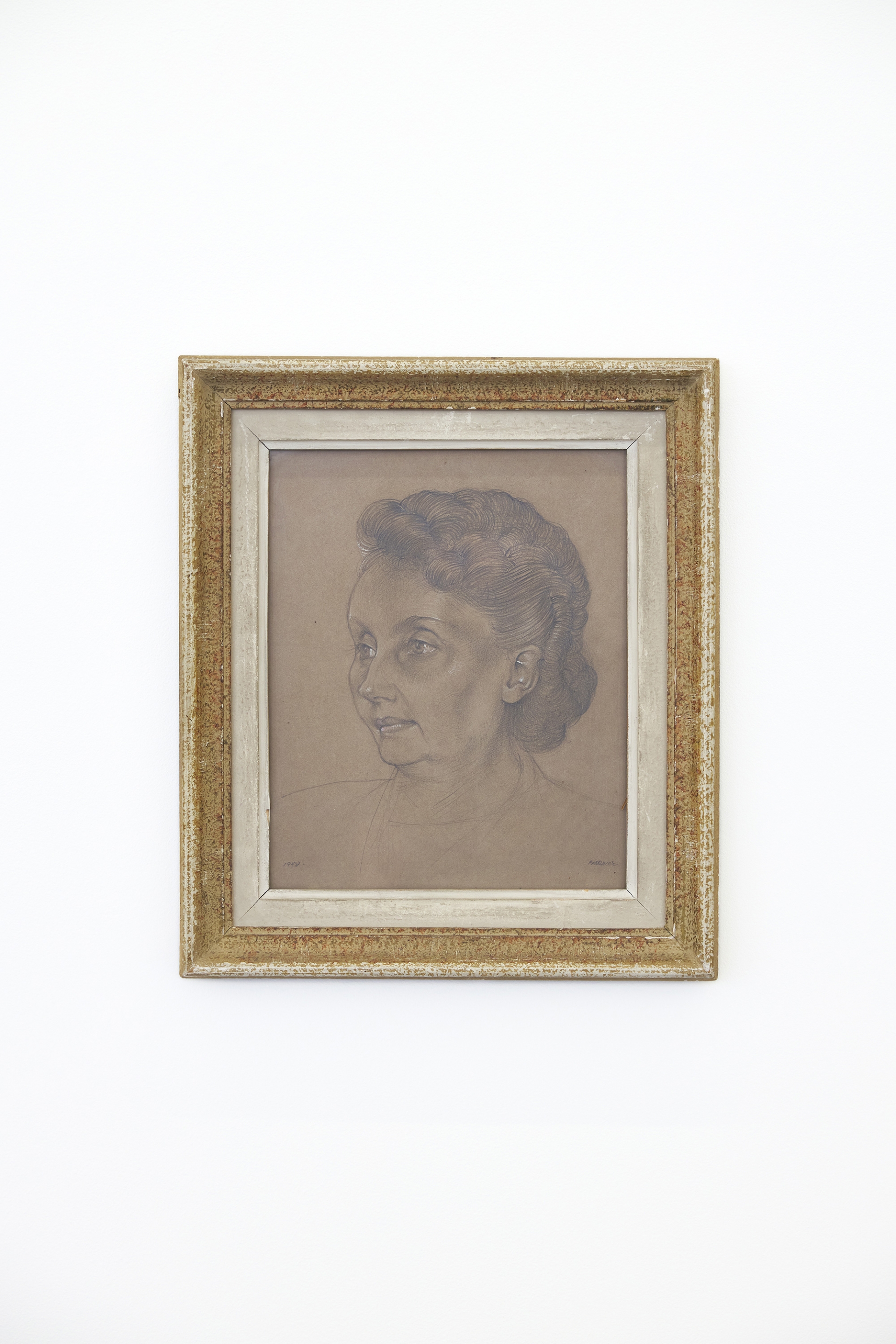
Hans Bellmer, Portrait de femme, 1948
Pencil and heightened gouache on paper, 27,5 × 22,5 cm | 37 × 32 cm (framed)
Exhibition views, Dealers, Anonymes — Photo: Aurélien Mole
Work views — Photo: Alexei Kostromin
PARIS — Cascades
9 rue des Cascades
75 020 Paris – France
from Tue. to Fri.: 10 a.m. to 6 p.m.
Sat.: 11 a.m. to 7 p.m.
and by appointment
PARIS — Beaune
5 & 7 rue de Beaune
75 007 Paris – France
from Tue. to Fri.: 10 a.m. to 6 p.m.
Sat.: 11 a.m. to 7 p.m.
and by appointment
Contact
PARIS — CASCADES: +33 (0)9 54 57 31 26
PARIS — BEAUNE: +33 (0)9 62 64 38 84
info@galeriecrevecoeur.com